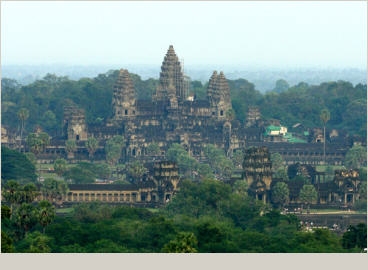City of Temples
Once home to gods and kings, today this place is called Angkor Archaeological Park with an area of over 40,000 hectares with more than a thousand temples. The most prominent of which is Angkor Wat temple located in the deep forest and still quite intact. Angkor Wat attracts more than 5% of international tourists to Cambodia. This is the pride of the Cambodian people, so they put this structure on their national flag in 1850.

It is difficult to fully describe the magnitude and grandeur of this city. Angkor Wat, in Khmer, meansCity of Temples, is the largest religious monument in the world. This wonder is characterized by Khmer mountain temple architecture with long and narrow stone corridors, forming a mysterious and complex maze. I felt like I was walking forever without reaching the end, in the humid and hot atmosphere of the jungle. Fortunately, Angkor sells many types of entrance tickets, 1-day, 3-day and 7-day tickets. If anyone does not have enough time or health to explore the temples here, they can come back the next day.
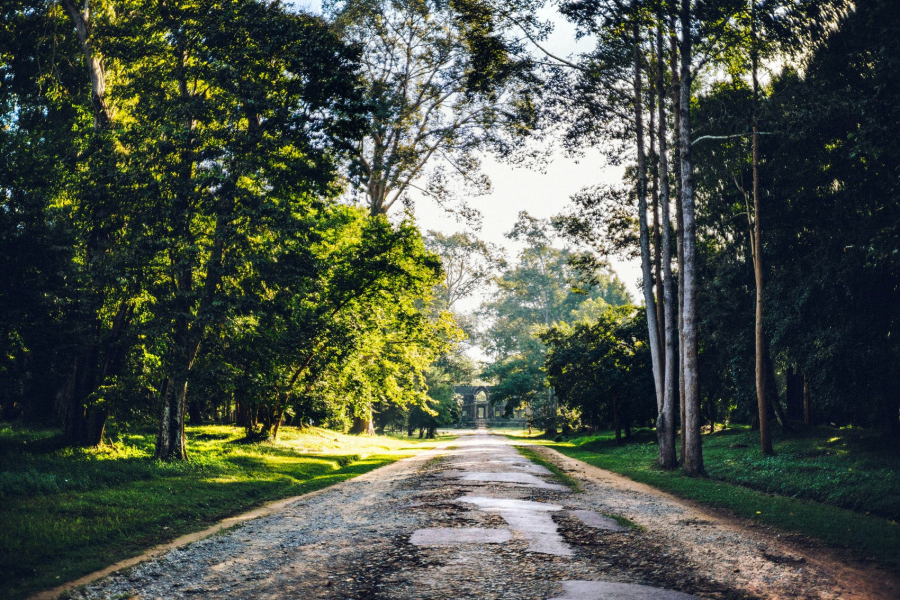
Angkor Wat, with its 65-meter-high tower visible from afar, is the only mountain temple in Cambodia with its main entrance facing west, toward the setting sun. The entrance is a stone path that crosses a large moat. Those who have been to Angkor Wat say it is imperative to get there before dawn, to see the sun rise over the main temple and reflect in the moat. However, behind every photo taken at this glorious moment is a battle with the thousands of tourists jostling to get there. So the next day, I returned to Angkor before dawn, but I headed straight to another, more secluded area where I could have the whole temple to myself.

Angkor Wat temple complex consists of four floors, gradually shrinking as it goes up, simulating the image of the sacred mountain Meru of the Indians. It was originally built as a Hindu temple to honor the god Vishnu, and gradually converted into a Buddhist temple at the end of the 12th century, the powerful period of the Khmer Empire. From large and small blocks of stone, the Khmer people arranged and attached them delicately. Angkor Wat can be considered the pinnacle of Khmer art and architecture, with the main temple area consisting of 398 rooms with sophisticated stone carvings demonstrating the extraordinary strength and skillful hands of the ancient Khmer people. Through hundreds of years of ups and downs in history, the giant reliefs on columns, doors, ceilings, walls, corridors, railings... are still quite intact.
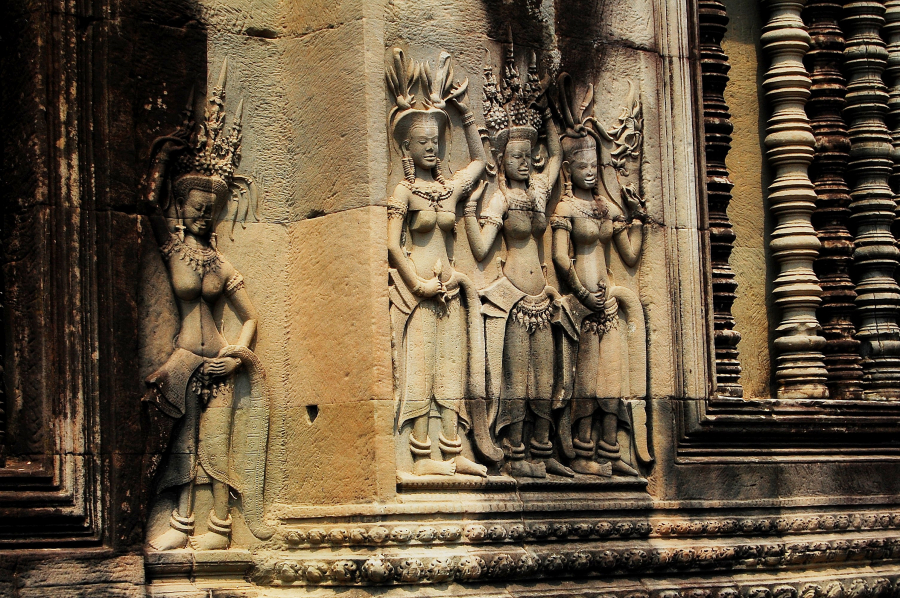
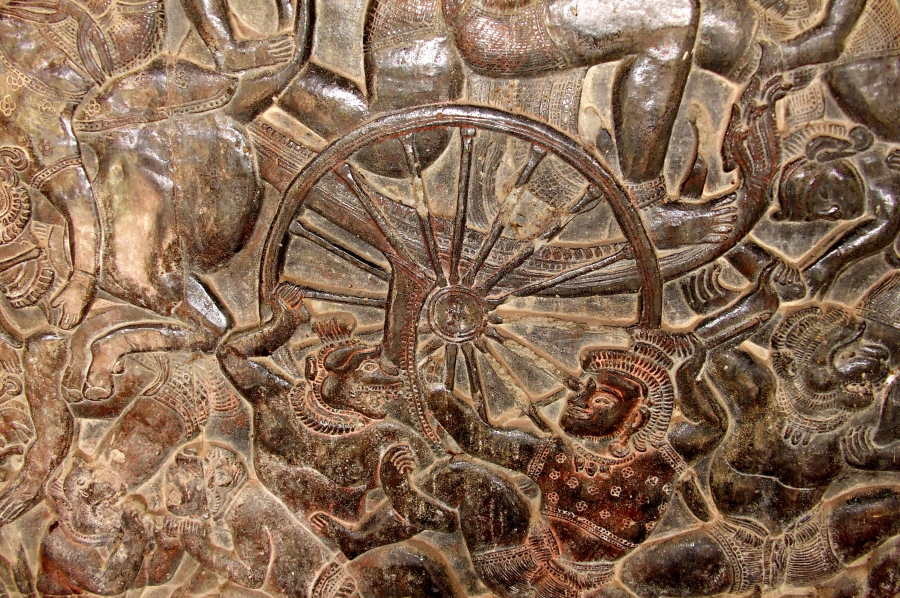

The millennial mysteries
Angkor is not a temple complex, but a huge city with countless temples buried in it. Simply strolling and stopping at any temple or pagoda along the way will not help you piece together the events that happened in the history of this city. Instead, you should visit the monuments here in chronological order, and find out when the monuments were built and when they were destroyed.
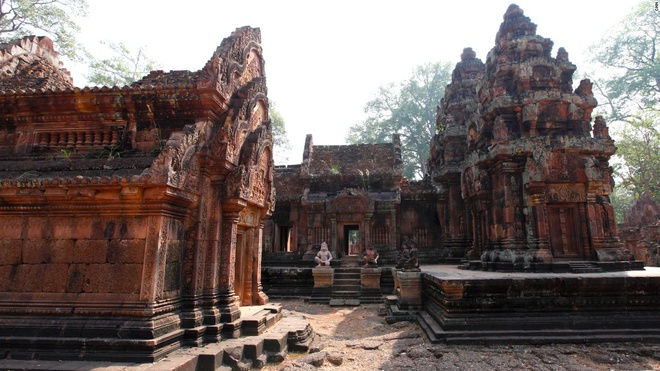

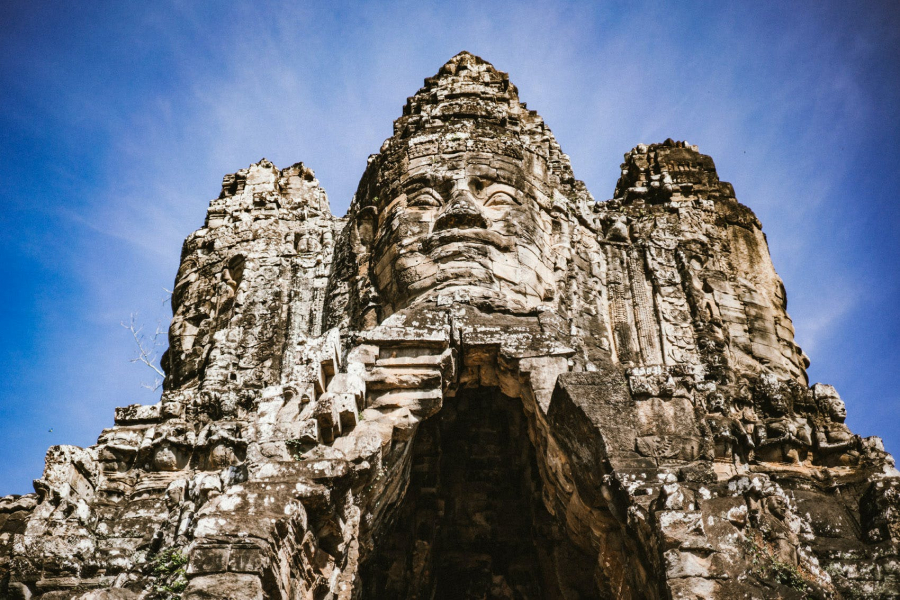
Bayon Smile
Tourists coming here cannot miss the mysterious Bayon smile and the charming apsara dance on the stone reliefs at Angkor Wat. Therefore, these are the two most crowded destinations. To avoid the jostling, after visiting the two main attractions, Angkor Wat and Bayon, when many people return to Siem Reap for lunch, you can visit some other places; or if you meet a group of tourists entering Ta Prohm, you can change direction to nearby Preah Khan.
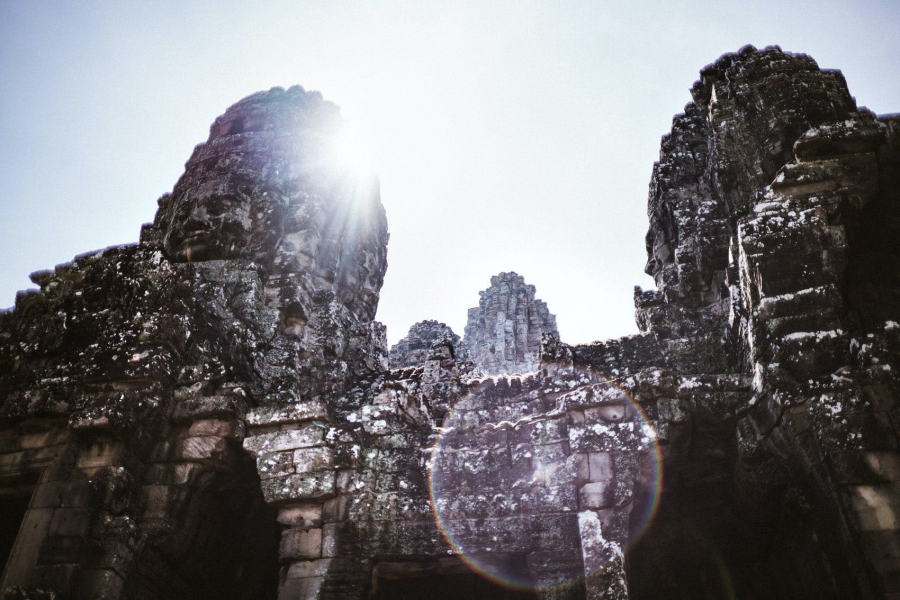
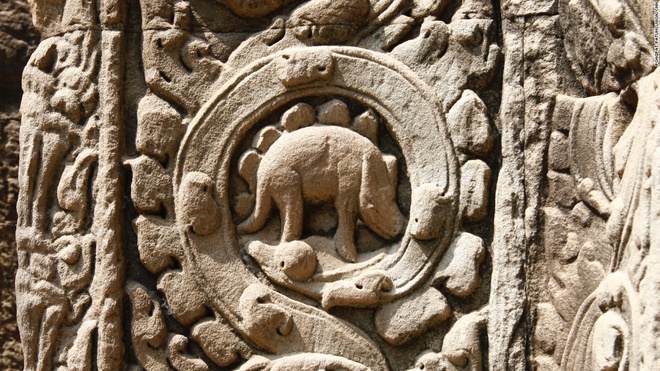

Typical of the beauty and uniqueness of the stone reliefs here are the statue of Vishnu, the god who dominates all spiritual beliefs in Siem Reap, located to the west of the entrance to Angkor Wat, or the statue of Garuda with a human head, three eyes and an eagle's beak. In addition, there is also the statue of the seven-headed snake god Naga, a mythical creature mentioned in both Buddhism and Hinduism. Even more special, at Ta Prohm (also known as the Queen's Mausoleum), if you pay attention, you can see a relief depicting an animal with such clear features that anyone can immediately recognize it as a stegosaurus, a dinosaur that lived in the late Jurassic period. Why the Khmer carved a stegosaurus at Angkor is still a mystery that science has not been able to answer...
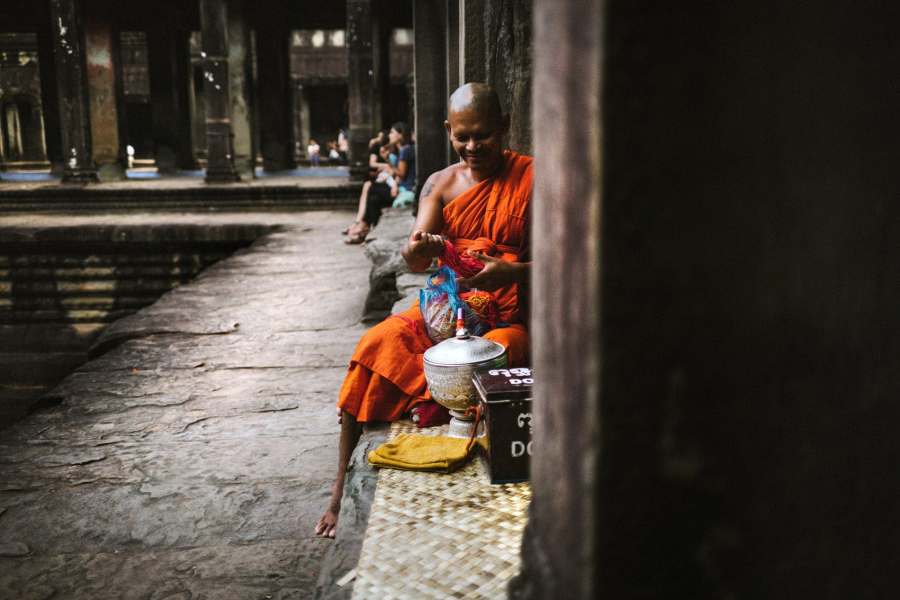
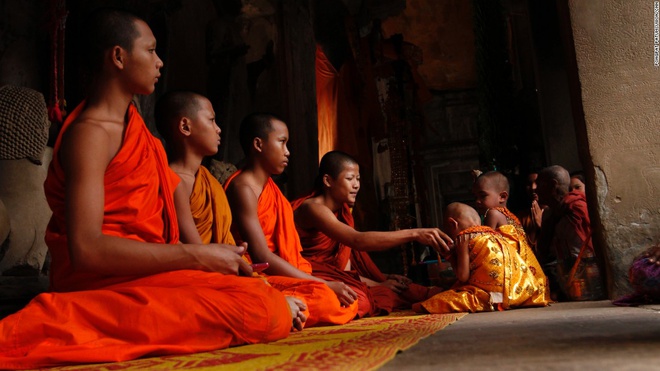

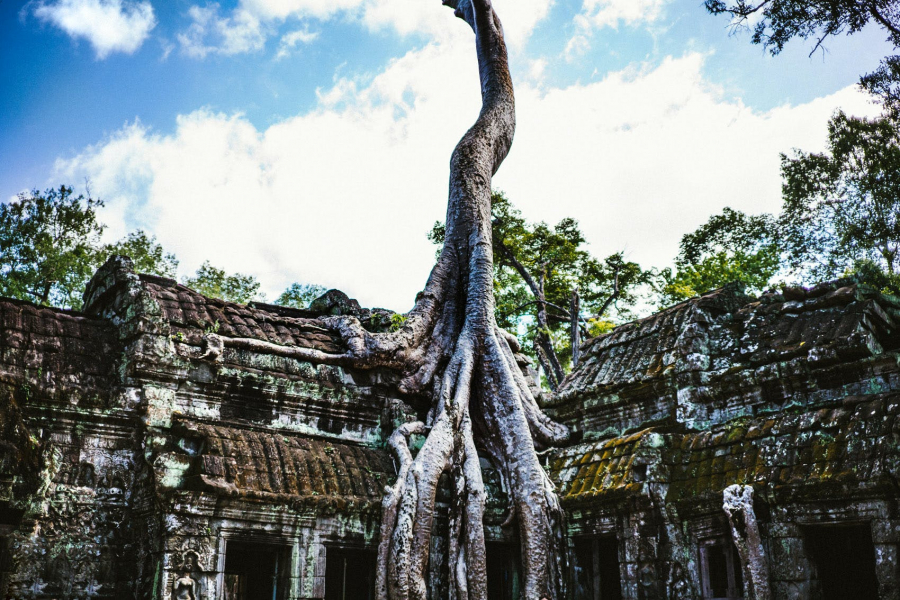
Ta Prohm
Ta Prohm became famous worldwide after the filmLara Croft: Tomb Raiderwas filmed inside the temple in 2001. Ta Prohm is different from other temples because of the ancient tree roots that grow through the walls. The roots penetrate every crack and crevice in the stone, making it look like the jungle is eating away at the temple. The dense foliage also makes the air here cooler than other places. Unfortunately, the trees grew out of control and threatened to crush the temple, so the decision was made to cut them down.
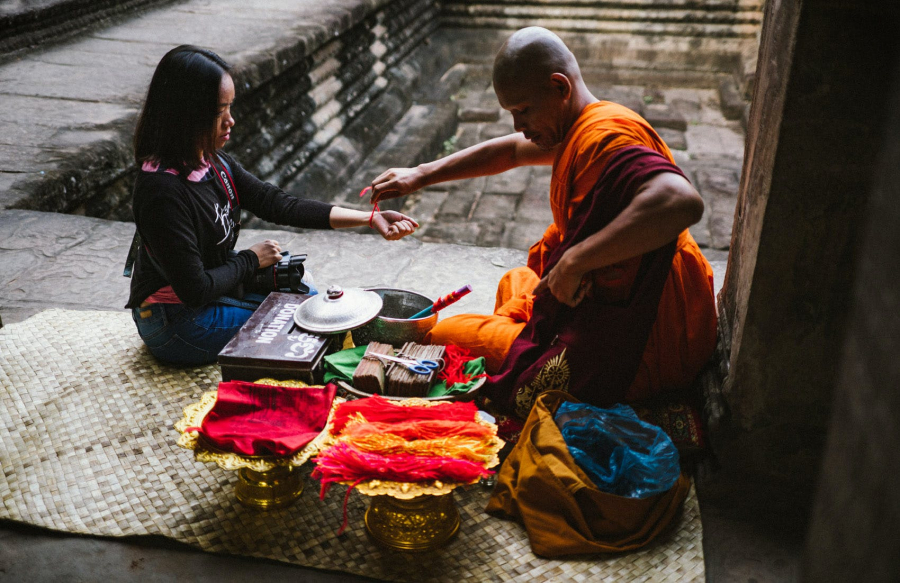
After a day of wandering around the Khmer ruins, I lingered in Angkor at dusk and climbed Bakheng Hill to watch the sunset over Angkor Wat. How many times had the sun set over the Angkor towers? I wondered, feeling nostalgic for the traces of time left on this place, once the most majestic and sacred sanctuary of the Khmer Empire.
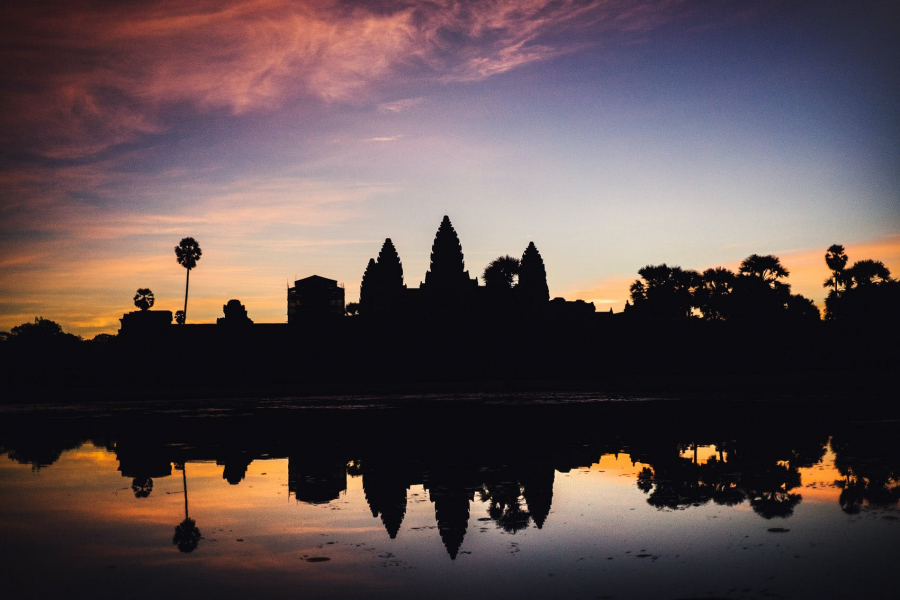
More information
Trip:There are direct flights from Hanoi, Ho Chi Minh City and Da Nang to Siem Reap. From Siem Reap International Airport, you can reach Angkor Wat in 20 minutes by taxi or motorbike taxi. Or you can fly to Phnom Penh International Airport and then take a car to Siem Reap. Another option is to go by road via Moc Bai (Tay Ninh) border gate to Phnom Penh; or Tinh Bien (An Giang) border gate to Phnom Penh and then continue to Siem Reap, then continue to Angkor Park.
Sightseeing:If you are not a Cambodian citizen, you will need to purchase an entrance ticket to Angkor. There are different types of tickets: 1-day (20 USD), 3-day (40 USD), or 7-day (60 USD), children under 12 enter free regardless of nationality.
Accommodation:The most convenient way is to rent a room in Siem Reap and then go to Angkor Park by taxi, mini bus tour or motorbike.
Transportation in Angkor Park:Angkor area is very large so you have to choose some means of transportation instead of walking such as bicycle, motorbike, tuk tuk, car, taxi...
Cuisine:There are snack stalls in Angkor Park, and there is also a row of cheap restaurants along Srah Srang. If you have a multi-day pass and are not in a hurry, you can return to Siem Reap for a break and lunch.
Note:No shorts, miniskirts, off-the-shoulder tops, or tight clothing. Wear good shoes and loose clothing because you will be walking a lot and climbing stairs all day.



























